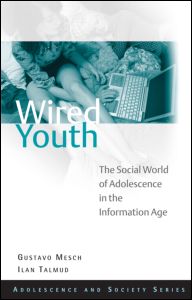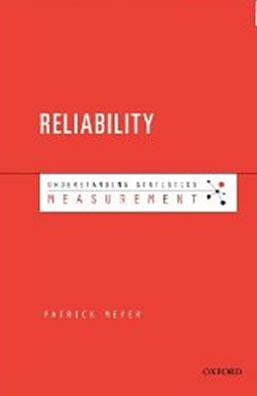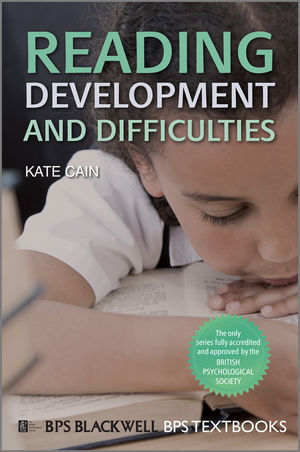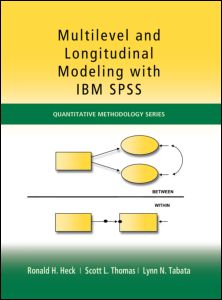New psychology books come in every week at the Central Library. Subscribe to the Psychology Department blog to be kept informed of new arrivals!
If these books are out on loan, do place a hold on them by clicking on the orange “Request” button at the top of the page- that way, you can be the next one to read them!
To see more new Psychology books, click here.
(1) Wired youth: The social world of adolescence in the information age
(by Gustavo S. Mesch and Ilan Talmud)
Central Library (Level 3); HQ799.2 Int.Me 2010
About the book:
“The debate on the social impact of information and communication technologies is particularly important for the study of adolescent life, because through their close association with friends and peers, adolescents develop life expectations, school aspirations, world views, and behaviors.
This book presents an up-to-date review of the literature on youth sociability, relationship formation, and online communication, examining the way young people use the internet to construct or maintain their inter-personal relationships. Using a social network perspective, the book systematically explores the various effects of internet access and use on adolescents’ involvement in social, leisure and extracurricular activities, evaluating the arguments that suggest the internet is displacing other forms of social ties. The core of the book investigates the motivations for online relationship formation and the use of online communication for relationship maintenance. The final part of the book focuses on the consequences, both positive and negative, of the use of online communication, such as increased social capital and online bullying.
Wired Youth is ideal for undergraduate and graduate students of adolescent psychology, youth studies, media studies and the psychology and sociology of interpersonal relationships.” (Routledge)
(2) Spatial cognition, spatial perception: Mapping the self and space
(Edited by Francine L. Dolins & Robert W. Mitchell)
Central Library (Level 3); BF469 Spa 2010
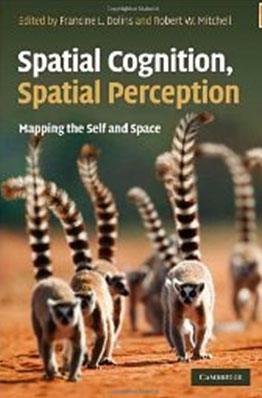
About the book:
“How does knowledge of the body in space relate to an understanding of space itself? Spatial cognition is discussed from two closely related perspectives: the internal mapping of external stimuli (e.g., landmarks and sensory perception of environmental information) and the internal mapping of internally perceived stimuli (e.g., kinesthetic and visual imagery), and their subsequent effects on behaviour. Clarification of what spatial information is present in most perceptual processes and how this is used cognitively in relation to the self in space is then established. Major points and controversies of the various models are discussed, along with evolutionary perspectives of spatial perception and object recognition and comparisons between human and non-human spatial cognitive abilities and behaviours. Written for postgraduate students and researchers, the authors present theoretical and experimental accounts at multiple levels of analysis – perceptual, behavioural and cognitive – providing a thorough review of the mechanisms of spatial cognition.
• Analyses all models of cognition and perception, presenting findings applicable to a variety of disciplines including biological anthropology, psychology and neuroscience • Primates, humans and other species are discussed, allowing comparison to increase understanding of the processes • With contributions from leading researchers in the field, providing an expert analysis of the cognitive and perceptual processes of spatial cognition.” (Cambridge University Press)
(3) Understanding Measurement: Reliability
(by J. Patrick Meyer)
Central Library (Level 3); BF39 Mey 2010
About the book:
“This is a title in our Understanding Statistics series, which is designed to provide researchers with authoritative guides to understanding, presenting and critiquing analyses and associated inferences. Each volume in the series demonstrates how the relevant topic should be reported — including detail surrounding what can be said, and how it should be said, as well as drawing boundaries around what cannot appropriately be claimed or inferred.
This volume addresses reliability, which is a fundamental aspect of any social science study that involves educational or psychological measurement. It not only has implications for the quality of test scores themselves, but also any statistical analysis conducted using those scores.
Topics addressed in this book include cover three different types of reliability methods and appropriate standard errors of measurement: classical test theory methods, decision consistency indices, and generalizability theory coeffcients. After a brief introduction to the topic, the author outlines how to report reliability in professional journal articles. Meyer is known for his clear, accessible writing; like all books in this series, this volume includes examples of both good and bad write-ups for methods sections of journal articles.” (Oxford University Press)
(4) Reading development and difficulties
(by Kate Cain)
Central Library (Level 3); LB1050.5 Cai 2010
About this book:
“Reading Development and Difficulties is a comprehensive and balanced introduction to the development of the two core aspects of reading: good word reading skills and the ability to extract the overall meaning of a text.
· Unique in its balanced coverage of both word reading and reading comprehension development, this book is an essential resource for undergraduates studying literacy acquisition
· Offers wide coverage of the subject and discusses both typical development and the development of difficulties in reading
· Accessibly written for students and professionals with no previous background in reading development or reading difficulties
· Provides a detailed examination of the specific problems that underlie reading difficulties”
(Wiley)
(5) Multilevel and longitudinal modeling with IBM/SPSS
(by Ronald H. Heck, Scott L. Thomas, & Lynn N. Tabata)
Central Library (Level 3); HA32 Hec 2010
About the book:
“This is the first book to demonstrate how to use the multilevel and longitudinal modeling techniques available in IBM SPSS Version 18. The authors tap the power of SPSS’s Mixed Models routine to provide an elegant and accessible approach to these models. Readers who have learned statistics using this software will no longer have to adapt to a new program to conduct quality multilevel and longitudinal analyses. Annotated screen shots with all of the key output provide readers with a step-by-step understanding of each technique as they are shown how to navigate through the program. Diagnostic tools, data management issues, and related graphics are introduced throughout. SPSS commands show the flow of the menu structure and how to facilitate model building. Annotated syntax is also available for those who prefer this approach. Most chapters feature an extended example illustrating the logic of model development. These examples show readers the context and rationale of the research questions and the steps around which the analyses are structured. The data used in the text and syntax examples are available at http://www.psypress.com/multilevel-modeling-techniques/ .
The book opens with the conceptual and methodological issues associated with multilevel and longitudinal modeling, followed by a discussion of SPSS data management techniques which facilitate working with multilevel, longitudinal, and/or cross-classified data sets. The next few chapters introduce the basics of multilevel modeling, how to develop a multilevel model, and trouble-shooting techniques for common programming and modeling problems along with potential solutions. Models for investigating individual and organizational change are developed in chapters 5 and 6, followed by models with multivariate outcomes in chapter 7. Chapter 8 illustrates SPSS’s facility for examining models with cross-classified data structures. The book concludes with thoughts about ways to expand on the various multilevel and longitudinal modeling techniques introduced and issues to keep in mind in conducting multilevel analyses.” (Psychology Press)
Gerrie Kow, Psychology Resource Librarian
gerrie@nus.edu.sg

